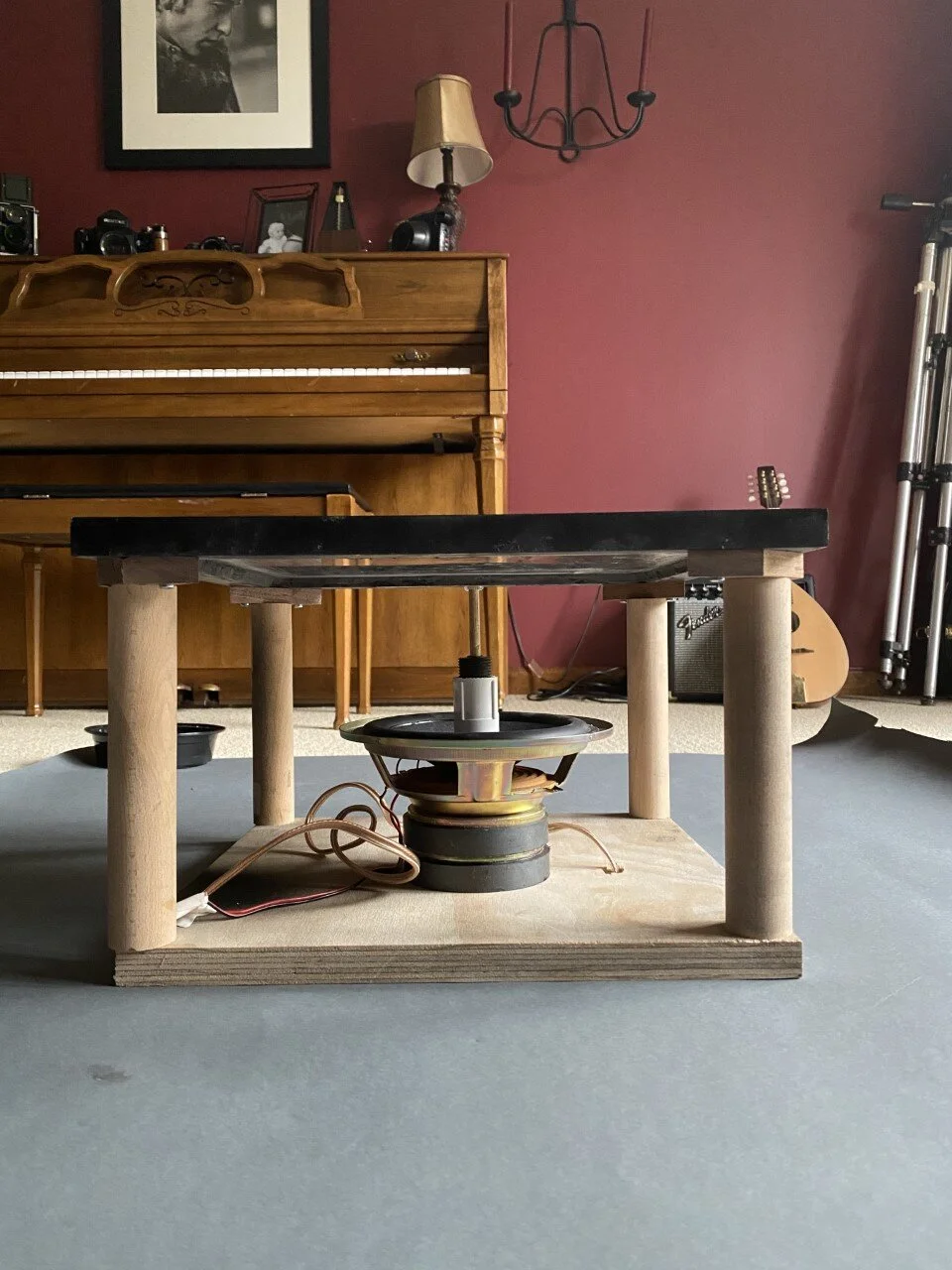(The following is a blog post I started working on last year but never finished. I was pleasantly surprised to learn these photographs won an award at the FZP festival. Thought now was a good time to finish and post this).
Earlier this year I created photographs for FotografiaZeroPixel, an analog film photography festival that takes place in Trieste, Italy. The theme of the exhibit is “Music”.
The following is an (abbreviated) explanation of how I approached and completed the project.
After spending a lot of time brainstorming what to photograph, I decided I wanted to make photographs of sound vibrations. The energy of things has long fascinated me, this would be a great way to do a hands-on, deeper dive into the subject. I might even catch some magical underlying universal patterns!? The theme announcement noted that 2020 is the 250 anniversary of the birth of Beethoven. Given that, I decided to focus on classical music. But now, how do you visually capture sound waves? I needed something for the waves to flow through, and a way to visualize and photograph them.
At this point, I started having conversations with my armchair physicist, experimenter extraordinaire, helper, and builder of all things husband. “Can we build something that will let me photograph sound waves…?” Thus began the construction and testing stage.
We started by dismantling a speaker:
Next, we needed something to mount above the speaker that would vibrate. It would need to be framed out and made waterproof. This was in the early days of the Pandemic; we hardly left home for groceries, let alone something for a hobby. We started by trying things we had at home; plastic dinner plates, platters and bowls of different densities etc. Those weren’t working; they didn’t transmit the vibrations well.
We moved onto metal plates. We had a couple of metal plates at home. Tried those but they were too dense; a trip to Home Depot was inevitable. It was time to don a mask, gloves, and scuba mask and venture out. After testing metals of different densities, we found an aluminum plate that was just right.
homemade sound vibration catcher
It was now time to test different liquids for the sound waves to flow through. Experiments were done with milk, water with black ink dripped in, salt, water and oil, water with food coloring, and…….liquid gallium. The idea behind the gallium was that the waves would be visible but it would also hold an imprint of music over time. A cumulative effect, as crystals formed as it hardened. This was beautiful and intriguing but as we were watching this effect, we noticed the color of the gallium was changing, it was taking on a burnt look. “Oh, how cool!” “Wait……….it’s eating the aluminum plate!”. It was time to refocus, simplify and move back to the non-plate eating fluid of water.
experimenting with gallium and black ink
experimenting with gallium
Once the metal plate/box was constructed and liquid testing was done, it was time to figure out how to get an image of the composer in the water. The first attempt involved mounting the image onto a piece of cardboard and suspending it over the water. When it came down to shooting, this proved extremely challenging and frustrating. I ended up lining the box with an image of the composer, sealed inside a large zip lock bag.
After this, the fun began; I turned on Beethoven’s 5th, the plate vibrated and patterns began forming in the water. Visual patterns formed from sound bouncing around as the music played. I studied the movements of the water, clicking the shutter at precise moments when it felt right.
The following are the photographs that were on display:
As I was watching and photographing, there were times when things lined up just so that it emphasized the eye in a mysterious way. Like old paintings where the eyes follow you no matter which way you approach it:
Mozart contact sheet
That is my “Classical Refractions” project in a nutshell. Though these were “final” photos, I feel like this is just the beginning and hope to continue exploring photographing sound waves.
Description of work:
Rays of light carry a reflection into the camera and waves of music vibrate the world around us. Using those concepts together, these images capture the flow of both sight and sound as one; they are the reflection of the composer refracted by the sound waves from their music. The photographs were created by playing music through a dismantled speaker that was placed under a metal box filled with water. The box was lined with a painting of the composer. Each shot was timed to a precise intersection where visual and aural beauty collided. The music used to create the photographs included Beethoven’s 5th Symphony, Bach’s Prelude #1, and Mozart’s Marriage of Figaro.
Further info the Festival can be on their website, IG or Facebook page.




